Dimplex RT 202 U Handleiding
Dimplex
Thermostaat
RT 202 U
Bekijk gratis de handleiding van Dimplex RT 202 U (4 pagina’s), behorend tot de categorie Thermostaat. Deze gids werd als nuttig beoordeeld door 33 mensen en kreeg gemiddeld 4.6 sterren uit 17 reviews. Heb je een vraag over Dimplex RT 202 U of wil je andere gebruikers van dit product iets vragen? Stel een vraag
Pagina 1/4

RT 200 U, RT 201 U, RT 202 U
05/08/A 1 412 734 00 (EA 08/012) FE/JD
Raumtemperaturregler Bimetall Unterputz im Flächenschalterrahmen
Bimetal room temperature controller for flush installation in a flush mounted
switch frame
Thermorégulateur à bilame pour la régulation de la température ambiante,
conçu pour l’installation encastrée avec des cadres de recouvrement plats
Regulator temperatury pomieszczenia bimetal podtynkowy w ramie powierzchownego
przełącznika
Sicherheitshinweis!
Dieses Gerät darf nur durch eine Elektrofachkraft geöffnet und gemäß dem
entsprechenden Schaltbild im Gehäusedeckel / auf dem Gehäuse / in der Bedie-
nungsanleitung installiert werden. Dabei sind die bestehenden Sicherheitsvor-
schriften zu beachten. Der Betrieb in der Nähe von Geräten, welcheAchtung!
nicht den EMV-Richtlinien entsprechen, kann zur Beeinflussung der Gerätefunk-
tionen führen. Nach der Installation ist der Betreiber, durch die ausführende
Installationsfirma, in die Funktion und Bedienung der Regelung einzuweisen.
Die Bedienungsanleitung muss für Bedien- und Wartungspersonal an frei zu-
gänglicher Stelle aufbewahrt werden.
1. Anwendung
Dieser Raumtemperaturregler wurde speziell für die Regelung oder Überwa-
chung von Temperaturen in Büros, Wohnräumen und Hotels entwickelt und ist
geeignet für alle Heizungsarten. Bei elektrischen Fußbodenheizungen ist darauf
zu achten, dass die Leistung der Heizung auch bei Dauerbetrieb den Estrich
nicht überhitzen kann. Bei Warmwasserheizungen sind auf den Heizausgang
max. 10 stromlos geschlossene Ventile anzuschließen. Gegebenenfalls benötigte
Temperaturbegrenzungen müssen zusätzlich installiert werden. Für andere, vom
Hersteller nicht vorherzusehende Einsatzgebiete, sind die dort gültigen Sicher-
heitsvorschriften zu beachten. Eignung hierfür siehe Punkt 7. Gewährleistung.
2. Funktionen
Safety Instructions!
This device should be opened only by an electrical expert and installed in accor-
dance with the corresponding circuit diagram in the E housing lid / on the housing
/ in the operating instructions. Moreover, the existing safety regulations are to be
observed. Note! Operating the equipment in the vicinity of equipment, which does
not comply with electromagnetic compatibility guidelines, may affect the functio-
ning of the equipment. After the installation, the operator is to be oriented by the
installing company in the functioning and operation of the control system. The
operating instructions must be kept in a place freely accessible to operating and
maintenance personnel.
1. Application
This temperature controller has been specially devised for the control and
supervision of temperatures in offices, living spaces and hotels and is suited for
the control of all types of heating systems. With electric floor heating systems
care must be taken to ensure that the performance of the controlled system
cannot, even if the system is operated continuously, result in an overheating of
the pavement. With hot water heating systems, no more than 10 normally
closed valves must be used. Where applicable, temperature limiters need to be
installed in addition. Regarding other applications not to be foreseen by the
manufacturer of this device, the safety standards these applications need to be
followed and adhered to. Regarding the aptitude of the device for any such
application, please refer to section 7. herein.
D GB
2. Functioning
The room temperature controller described herein is equipped with an internal bi-
metal sensor that captures the currently existing room temperature. The device
controls the related heating or cooling system in accordance with the adjusted
set value. The different controller models have been provided with different
equip
ment, such as with an ON/OFF switch, a red “heating” lamp (type RT 201 U)
or with
a red “additional heating ON/OFF” lamp and corresponding switch (type
RT 202 U).
2.1 Thermal recirculation
As, during the heating or cooling procedure, the controller usually captures the
actually prevailing room temperature at a rather late point, a thermal recirculation
has been realised with the device that enables to excite it early enough with the
consequence that a very precise switching difference can be attained.
2.2 Suppression of the setting range
The setting elements (pins) located underneath of the knob enable to delimit the
setting range mechanically (see sections 3. and 6.).
2.3 ECO mode (night temperature decrease mode)
With all controller models that enable to operate in ECO mode (indicated by the
clock symbol shown in the connection diagram), the room temperature is decrea-
sed by approx. 4K when connecting the 230V~ power supply to the terminal .
3. Installation / Montage 3. Mounting / Installation
Je nach Gerätetyp oder Verpackungsgröße, wird das Gerät entweder geschlos-
sen oder der schnelleren Montage wegen geöffnet ausgeliefert. Das Gerät ist
mittels Zwischenrahmen der Schalterhersteller nach DIN 49075 in nahezu alle
Schalterprogramme integrierbar. Bei Mehrfachrahmen ist der Regler immer an
unterster Stelle zu montieren. Der Regler ist zur Montage in die UP-Dose be-
stimmt und darf nicht direkt Wärme- oder Kältequellen ausgesetzt werden. Es
ist darauf zu achten, dass der Regler auch rückseitig keiner Fremderwärmung
oder -kühlung, z.B. bei Hohlwänden durch Zugluft oder Steigleitungen ausge-
setzt wird.
Zum Öffnen des Reglers ist die Schraube nach Abziehen des Einstellknopfes zu
lösen und die Reglerkappe inklusive Rahmen abzunehmen. Nach elektrischem
Anschluss und Montage in die UP-Dose, ist der Regler in umgekehrter Reihen-
folge wieder zu schließen (siehe Punkt 6.).
Um den Einstellbereich Einzuengen, wird der sich unter dem Einstellknopf be-
findliche Stift abgezogen und die Einstellfahnen verstellt (rot für maximal und
blau für minimal mögliche Einstellung). Anschließend wird der Stift wieder ein-
gesteckt und somit die Begrenzungen arretiert (siehe Punkt 6.).
The device is, depending on the type version of the device or the size of the
package used for it, either delivered in closed or, in order to facilitate its fast
installation, also in opened condition. The device suits for the integration into
almost all DIN 49075 compliant intermediate frames that form part of the diffe-
rent frame lines offered by different producers. If using multiple frames, the
controller must always be mounted in the lowest position. The controller is
determined for installation on an UP box and must not directly be exposed to
any heat or cold sources whatsoever. Also care must be taken to ensure that it
is not exposed to the influence of heat or cold sources that warm or cool the
device at its back (through air flows in cavity walls or the temperatures radiated
by ascending pipelines, f. ex.).
To open the controller, remove the adjusting knob first, then loosen the screw
and remove the controller cap including the frame. After its electrical connec-
tion and installation in the UP box, the closing of the controller takes place in
inverse order (see section 6.).
The setting pins located underneath of the adjusting knob enable to delimit the
setting range of the controller mechanically. To enable this, the adjusting knob
must be removed by pulling it off and, after the adjustment of the related pins
(end stops, red for max. and blue for min. setting) be put on again in order to
lock the limitations (see section 6.).
Der Raumtemperaturregler erfasst mit einem innenliegenden Bimetallfühler die
Raumtemperatur und regelt entsprechend dem eingestellten Sollwert. Die
einzelnen Reglertypen unterscheiden sich durch die Ausstattung, wie Schalter
„Ein / Aus“ und Lampe rot „Heizen“ (Typ RT 201 U), Schalter und Lampe rot
„Ein / Aus Zusatzheizung“ (Typ RT 202 U)
2.1 Thermische Rückführung
Da während des Heiz- oder Kühlvorgangs der Regler die Raumtemperatur erst
relativ spät erfasst, wird mittels einer thermischen Rückführung der Regler
rechtzeitig zum Ausschalten angeregt und so eine sehr genaue Schaltdifferenz
erreicht.
2.2 Bereichseinengung
Mittels der sich unter dem Knopf befindlichen Einstellfahnen kann der Einstell-
bereich mechanisch begrenzt werden. (siehe Punkt 3. und 6.).
2.3 ECO-Betrieb (Nachtabsenkung)
Bei Reglern mit ECO-Betrieb (Uhrensymbol im Anschluss-Schaltbild) wird bei
Beschalten der Klemme mit 230 V~ auf eine um ca. 4K geringere Tempera-
tur geregelt.

Consigne de sécurité!
Seuls des électriciens qualifiés sont autorisés à ouvrir cet appareil et à
l’installer, conformément au schéma des connexions correspondant qui est
collé à l’intérieur du couvercle du boîtier électrique / sur le boîtier / dans la
notice d’utilisation. Pendant ce travail, les prescriptions de sécurité existantes
devront être respectées. Attention! L’utilisation de cet appareil à proximité
d’appareils qui ne sont pas conformes aux directives sur la CME peut influer
sur son fonctionnement. Après l’installation, l’utilisateur devra être mis
au
courant par l’entreprise chargée de l’installation du fonctionnement et du mode
d’utilisation du dispositif
de commande. Cette notice d’utilisation doit être
conservée à un endroit librement accessible, à l’intention du personnel chargé
de faire fonctionner et d’entretenir l’appareil.
Informacje odnośnie bezpieczeństwa
Niniejsze urządzenie może być otwierane wyłącznie przez wykwalifikowanego elek-
tryka. Należy instalować je stosownie do schematu znajdującego sie˛ na pokrywie
obudowy / na obudowie / w instrukcji obsługi. Podczas instalowania należy prze-
strzegać obowiązujących przepisów bezpieczeństwa. Uwaga! Praca w pobliżu
urządzeń, które nie spełniają przepisów w zakresie kompatybilności elektro-
magnetycznej, może prowadzić do zakłócenia funkcji urządzenia. Po wykonaniu
instalacji użytkownik winien zostać poinstruowany przez firme˛ instalującą o
działaniu i obsłudze funkcji regulujących. Instrukcja obsługi musi być przecho-
wywana w miejscu swobodnie doste˛pnym dla personelu obsługującego i konser-
wującego.
F PL
4. Technische Daten
Fühlerelement und Kontakt: Bimetall, Öffner Typ 1C
Versorgungs- und Schaltspannung: 250V~
Schaltvermögen: max.10(4)A
Regelbereich: 5 … 30°C
Schaltdifferenz: ca. 0,5K
Skala: Merkziffernskala ( 2 3 5 6)
max. zulässige Temperatur-Änderungs-
geschwindigkeit der Regelstrecke: 4K/h
Schutzart: IP30 nach entsprechender Montage
Schutzklasse: II nach entsprechender Montage
max. zulässige Luftfeuchtigkeit: 95%rH, nicht kondensierend
Gehäusematerial und -Farbe: Kunststoff Polycarbonat (PC),
reinweiß (ähnlich RAL 9010)
Approbation: VDE siehe Geräteaufdruck
4. Technical data
Sensing element / contact: bimetal sensor, type 1C / break contact
Supply and switching voltage: 250V~
Switching capacity: max.10(4)A
Control range: 5 … 30°C
Switching difference: approx. 0.5K
Scale: note numeral scale ( 2 3 5 6)
Max. admissible temperature changing
speed of the controlled system: 4K/h
Degree of protection: IP30 (after according installation)
Protection class: II (after according installation)
Max. admissible air moisture: 95% r.h., non condensing
Housing material and colour: plastic (polycarbonate), pure white
(similar to RAL 9010)
Certification: VDE, see housing imprint
1. Application
Ce thermorégulateur à bilame pour la régulation de la température ambiante a
été spécialement conçu pour le contrôle et la supervision de températures dans
des bureaux, des habitations et des hôtels et convient pour le réglage de tous
types de systèmes de chauffage. Avec les systèmes de chauffage par le sol il
faut veiller à assurer à ce que la puissance du système contrôlé ne puisse,
même si le système est opéré en marche continue, résulter dans une surchauffe
de l’aire en plâtre ou en ciment. Avec des systèmes de chauffage à eau chaude,
ne plus que 10 soupapes du type normalement fermé ne doivent être utilisées.
Le cas échéant, l’utilisation de limitateurs de température est nécessaire de
plus. Concernant des autres applications pas à prévoir par le fabricant de ce
dispositif, les standards de sécurité se rapportant à ces applications sont à
respecter. En ce qui concerne l’aptitude ou l’approbation du dispositif pour des
telles applications, veuillez également faire attention aux informations de
garantie dans chapitre 7. dans cette notice d’instructions.
2. Fonctionnement
Le régulateur de température ambiante décrit dans cette notice d’instructions
est doté d’un capteur à bilame interne pour la saisie de la température ambiante
actuelle. Le dispositif règle les systèmes de chauffage ou de refroidissement en
conformité avec la valeur de consigne effectivement ajustée. Les différents
types se distinguent par leur équipement, tel comme par exemple un interrup-
teur MARCHE / ARRET (type RT 201 U), un interrupteur «chauffage addi-
tionnel» avec un témoin lumineux rouge (type RT 202 U) correspondant.
2.1 Recirculation thermique
En raison du fait que le thermostat saisit, durant le processus de chauffage
et/ou de refroidissement, normalement la température ambiante dominante à
un moment relativement tard, une recirculation thermique est utilisée pour exci-
ter le régulateur à temps, ce qui permet d’obtenir un différentiel très précis.
2.2 Resserrage de domaine
La plage de réglage peut être limitée mécaniquement au moyen des éléments
mobiles d’ajustage qui se trouvent en dessous du bouton (voir paragraphes 3.
et 6.).
2.3 Mode de service «ECO» (abaissement de la température
nocturne)
Avec tous les régulateurs dotés d’un mode de service «ECO» (indiqué par un
symbole d’horloge dans le schéma de branchement), la température existant
dans un local s’abaisse par env. 4 K lorsqu’une tension de 230V~ est filée sur la
borne .
1. Zastosowanie
Ten regulator temperatury pomieszczenia został skonstruowany specjalnie do regu-
lacji albo kontroli temperatury w biurach, lokalach mieszkalnych i hotelach i nadaje
sie˛ do wszystkich rodzajów ogrzewań. Przy elektrycznie ogrzewanych podłogach
należy uważać, aby wydajność ogrzewania, również przy ciągłym ogrzewaniu, nie
mogła przegrzać jastrycha. Przy ogrzewaniach ciepłą wodą należy na wyjściu
ogrzewania przyłączyć maksymalnie 10 bezprądowych zwartych zaworów. W
danym wypadku, muszą być dodatkowo zainstalowane, potrzebne ograniczenia
temperatury. Dla innych, obszarów zastosowania, których nie może przewidzieć
wytwórca, należy tam przestrzegać obowiązujących przepisów bezpieczeństwa.
Przydatność na to patrz punkt 7. Gwarancja.
2. Funkcje
Regulator temperatury pomieszczenia uchwyca, z wewnątrz leżącym czujnikiem
bimetalowym, temperature˛ pomieszczenia i reguluje na odpowiednio nastawioną
wartość zadaną. Pojedyńcze typy regulatorów odróżniają sie˛ przez wyposażenie,
jak przełącznik „Włą./Wył.” i lampkę czerwoną „Ogrzewać” (Typ RT 201 U),
przełącznik i lampke˛ czerwoną „Włą./Wył. dodatkowe ogrzewanie” (Typ RT 202 U).
2.1 Termiczne sprze˛żenie zwrotne
Ponieważ podczas przebiegu ogrzewania albo chłodzenia regulator dopiero
wzgle˛ dnie późno uchwyca temperature˛ pomieszczenia, regulator zostanie przy
pomocy termicznego sprze˛żenia zwrotnego we właściwym czasie pobudzony do
wyłączenia i w ten sposób osiągnąć bardzo dokładną różnice˛ przełączenia.
2.2 Zawe˛ żenie zakresu
Przy pomocy znajdujących sie˛ pod przyciskiem flag nastawczych, zakres nasta-
wczy, może zostać mechanicznie ograniczony. (patrz punkt 3.i 6.).
2.3 ECO-Eksploatacja (obniżenie nocne)
Przy regulacji z ECO-eksploatacją (smbol zegara w przyłączu-plan połączeń) zosta-
nie, przy oprzewodowaniu zacisku z 230 V~ na około ca. 4K mniejszą
temperature˛, regulowane.
I Ein
0 Aus
Frostschutzstern (entspr. ca. 5°C)
Wohlfühlpunkt (entspr. ca. 20°C)
Zusatzheizung Ein
Bediensymbole
L Phase Betriebsspannung
N Neutralleiter Betriebsspannung
Ausgang Heizen
Ausgang Zusatzheizung
ECO-Eingang (Nachtabsenkeingang)
Klemmensymbole
5. Klemmen- und Bediensymbole
I ON
0 OFF
Frost protection asterisk (equivalent to approx. 5°C)
Well-being point (equivalent to approx. 20°C)
Additional heating ON
Control symbols
L Operating voltage (phase)
N Operating voltage (neutral conductor)
Output “heating”
Output “additional heating”
Temperature decrease input (ECO input)
Terminal symbols
5. Terminal and control symbols
2

3. Installation / raccordement
Le dispositif est, selon son type ou la taille du paquet utilisé pour son emballage,
livré soit en condition fermée ou, pour faciliter son installation rapide, en condi-
tion ouverte. Le dispositif peut, lors de l’utilisation des cadres intermédiaires en
conformité avec DIN 49075, être intégré dans presque tous les systèmes de
cadres de recouvrement actuellement en vente. Lors de l’utilisation de cadres
multiples, il faut toujours monter le régulateur à la position la plus basse. Le
dispositif est prévu pour l’installation dans une boîte encastrée et ne doit pas
être exposé à l’influence de sources de chaleur ou de froid. Il faut également
veiller à ce que le dispositif ne soit pas exposé à l’influence de sources de cha-
leur ou de froide, qui le chauffent ou refroidissent à sa face arrière (par des
courants d’air dans des murs creux ou par les températures répandues par des
conduites montantes, par ex.).
Pour ouvrir le régulateur, d’abord retirer le bouton de réglage et desserrer la vis.
Ensuite enlever le couvercle du régulateur conjointement avec le cadre de
recouvrement. Pour refermer le régulateur après le raccordement électrique et
l’installation du régulateur dans la boîte encastrée, procéder en ordre inverse
(voir chapitre 6.). Les broches de réglage existant en dessous du bouton de
réglage permettent de limiter mécaniquement la plage de réglage du régulateur.
Pour faire ça, d’abord enlever le bouton de réglage et ensuite régler les limites
(broche rouge pour l’humidité maximale et bleue pour l’humidité minimale, voir
chapitre 6.). Après ceci, encore monter le bouton de réglage.
4. Caractéristiques techniques
I MARCHE
0 ARRET
Astérisque «protection antigel» (équivalent à env. 5°C)
Point de bien-être (équivalent à env. 20°C)
Chauffage additionnel MARCHE
Symboles de contrôle
L Tension d’alimentation et de commutation (phase)
N Tension de service (conducteur neutre)
Sortie «chauffage»
Sortie «chauffage additionnel»
Entrée «ECO» (abaissement de la température nocturne)
Symboles bornier
5. Symboles bornier et symboles de contrôle
3. Montaż / przyłączenie
Zależnie od typu przyrządu albo wielkości opakowania, zostanie przyrząd albo
zamknie˛ty albo z powodu szybkiego montażu, otwarty wydany. Przyrząd daje sie˛
zitegrować przy pomocy ramy pośredniczącej producenta przełączników według
DIN 49075 do prawie wszystkich programów przełączników. Przy ramach wielo-
krotnych regulator należy zawsze montować na najniższym miejscu. Regulator jest
przeznaczony do montażu w UP-puszce i nie może być wystawiony na bezpośred-
nie gorące albo zimne źródła. Należy zwracać uwage˛ na to, aby regulator nie został
wystawiony od tylnej strony na obce ogrzewanie albo chłodzenie, np. przy pustych
ścianach przez przeciąg albo pion instalacyjny. Aby otworzyć regulator, należy po
ściągnie˛ciu gałki do nastawiania, zluzować śrube˛ i zdjąć kopak regulatora łącznie z
ramą. Po elektrycznym przyłączeniu i montażu w UP-puszce, (pod tynkiem), należy
regulator w przeciwnej kolejności znowu zamknąć (patrz punkt 6.).
Aby zakres nastawienia zawe˛żyć, zostanie obciągnie˛ty sztyft, który znajduje sie˛ pod
gałką do nastawiania a flagi nastawcze przestawione (czerwone dla maksymalnego
a niebieskie dla minimalnego możliwego nastawienia). Naste˛pnie sztyft zostanie
znowu wsadzony, a zatem ograniczenia ustalone (patrz punkt 6 ).
4. Techniczne dane
Element czujnika / kontakt: Bimetal, normalnie włączony typ 1C
Zaopatrzeniowe- i łączeniowe napie˛cie: 250V~
Zdolność łączenia: max.10(4)A
Zakres regulacji: 5 ... 30˚C
Różnica przełączania: ca. 0,5K
Skala: Skala zapamie˛tywania liczb ( 2 3 5 6)
Maks. dopuszczalna szybkość zmiany
temperatury objektu regulacji: 4K/H
Rodzaj ochrony: IP30 (po odpowiednim montażu)
Klasa ochrony: II (po odpowiednim montażu)
Maks. wilgotność powietrza: 95% r.h., nie kondensująca
Materiał obudowy i kolor obudowy: Plastyk polycarbonat (PC), czysto biały
(podobny RAL 9010)
Aprobata: VDE patrz nadruk na przyrządzie
I
Włą.
0
Wył.
Ochrona przed mrozem (odpow. 5˚C)
Temperatura dobrego poczucia (odpow. 20˚C)
Dodatkowe ogrzewanie WŁĄ.
Symbole obsługi
L
Faza napie˛ cie robocze
N
Przewód zerowy napie˛ cie robocze
Wyjście ogrzewać
Wyjście ogrzewać dodatkowo
ECO-Wejście (obniżenie nocne)
Symbole zacisków
5. Zaciski i symbole obsługi
3
Capteur à bilame / contact: type 1C (contact de rupture)
Tension d’alimentation et de commutation: 250V~
Pouvoir de coupure: max.10(4)A
Plage de réglage: 5 … 30°C
Différentiel: env. 0,5K
Echelle: échelle à chiffres de repère
( 2 3 5 6)
Vitesse max. de variation de température
du système contrôlé: 4K/h
Type de protection: IP30 (après installation
correspondante)
Indice de protection: II (après installation
correspondante)
Limite d’humidité de l’air: max. 95% d’humidité relative de
l’air, non condensant
Matériau du boîtier et couleur: en plastique (polycarbonate), blanc
pur (pareil à RAL 9010)
Homologation: VDE, voir empreinte dans le boîtier
Product specificaties
| Merk: | Dimplex |
| Categorie: | Thermostaat |
| Model: | RT 202 U |
Heb je hulp nodig?
Als je hulp nodig hebt met Dimplex RT 202 U stel dan hieronder een vraag en andere gebruikers zullen je antwoorden
Handleiding Thermostaat Dimplex

6 Mei 2023

26 April 2023

20 Maart 2023

13 Maart 2023

12 Maart 2023

27 Februari 2023

14 Februari 2023

15 December 2022

20 Oktober 2022

20 Oktober 2022
Handleiding Thermostaat
- Itho-Daalderop
- GE
- Crestron
- Emerson
- Airwell
- Busch-Jaeger
- Stiebel Eltron
- Fibaro
- Etherma
- RWE
- AWB
- Hugo Muller
- Robertshaw
- IMIT
- Johnson Control
Nieuwste handleidingen voor Thermostaat
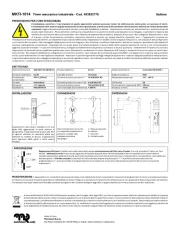
2 September 2025
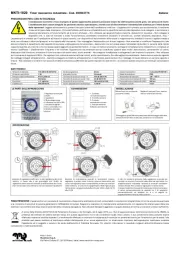
1 September 2025
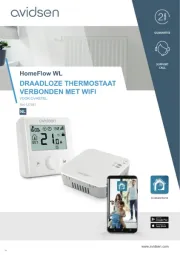
30 Augustus 2025
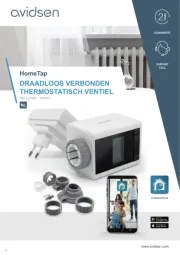
30 Augustus 2025
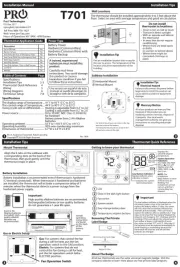
26 Augustus 2025
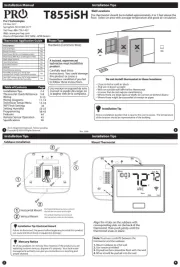
26 Augustus 2025
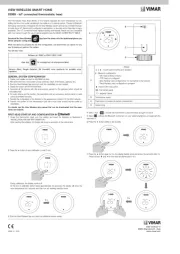
26 Augustus 2025
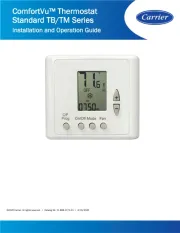
26 Augustus 2025
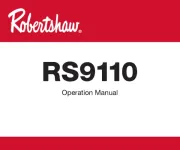
26 Augustus 2025
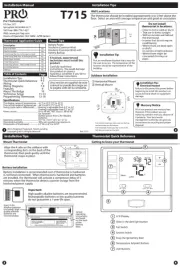
26 Augustus 2025